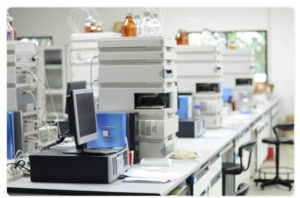Surface finish plays an essential role in the effectiveness of PTFE seals. The different finishes provide different degrees of contact between the two components, which affects the seal’s strength and reliability. In this paper, we will discuss the effect of surface finish on PTFE seal performance and suggest ways to improve seal quality.
The Influences of Surface Finish on Friction
The surface finish is critical for polymer-based seals. Despite being considered a soft plastic, PTFE is significantly harder than traditional o-ring materials. Because of this, if the mating surface is designed for other materials, it can cause the PTFE seals to leak.
As you can see in the graph below, the improvement in the surface finish has a favorable effect on the frictional force required.
The following specifications were used in the force test that resulted in the above data.
- Stroke Speed: 4 in/min (102 mm/min)
- Shaft Diameter: 0.1875in. (4.762mm)
- Ambient Temperature: 73°F (23°C)
- Mating Surface Material: 17 -4 PH S.S.
- Mating Surface Hardness: -40 Rc
Surface Finish Influences on Wear
The finish of the mating surface is one of the main factors in the PTFE seal wear. Wear on the seal is generally proportional to frictional force. In other words, less friction reduces the wear on the seal.
The following graph shows how a smoother surface finish reduces the PTFE seal wear rate.
To calculate the wear rate in microinches RMS, we used the formula IN3 -MIN/LB-FT-HR -10-9. For microinches Ra, we used the formula CM3 -MIN/KG-M-HR -10-9.
We used the following test parameters during our testing to ensure accuracy for each test.
- Surface Speed: 55 fpm (17 m/min)
- Loading Stress: 55 lb./in2 (4 bar)
- Wear Rate in Air: @ PV 3025 lb./in2 x ft/min (7.5 N/mm x m/min)
- Mating Surface Hardness: Rc 42
- Matin Surface Maerial 17 -4 PH Stainless steal
- Mating Surface Finish: 1.6 to 111.1 microinches RMS (1.4 to 100 microinches RA)
- Ambient Temperature: 70°F (21°C)
- Ambient Relative Humidity 75% RH
- Duration 5 Hours
- Seal material FP
Influences on Sealing Ability
Finally, we looked at how the surface finish affected PTFE’s sealing ability. In general, the sealing ability of PTFE is proportional to the fluid’s viscosity. If a media, like gas, has a reduced viscosity, it is more difficult to seal. In these situations, having a smoother finish on the mating surface can help ensure fewer leaks.
We’ve found that different mediums require not only different finish ranges between them but also different finish ranges when considering if the surface is dynamic or static. You can see our suggested finish in the table below.
| Media | Dynamic Surface | Static Surface |
| Gases and Liquids at Cryogenic Temperatures | 2 to 4 microinches RMS (1.8 to 3.6 Microinches Ra) | 4 to 8 Microinches RMS (3.6 to 7.2 Microinches Ra) |
| Gas at Non-Cryogenic Temperatures | 6 to 12 Microinches RMS (5.4 to 10.8 Microinches Ra) | 12 to 32 Microinches RMS (10.8 to 28.8 Microinches Ra) |
| Liquids | 8 to 16 Microinches RMS (7.2 to 14.4 Microinches Ra) | 16 to 32 Microinches RMS (14.4 to 28.8 Microinches Ra) |
As you can see, the mating surface finishes can profoundly affect PTFE seals. Because of this, if the mating surface is designed for other materials, it can cause the PTFE seals to leak. Finally, we examined how this affected PTFE’s sealing ability. In general, the sealing ability of PTFE is proportional to the fluid’s viscosity.

